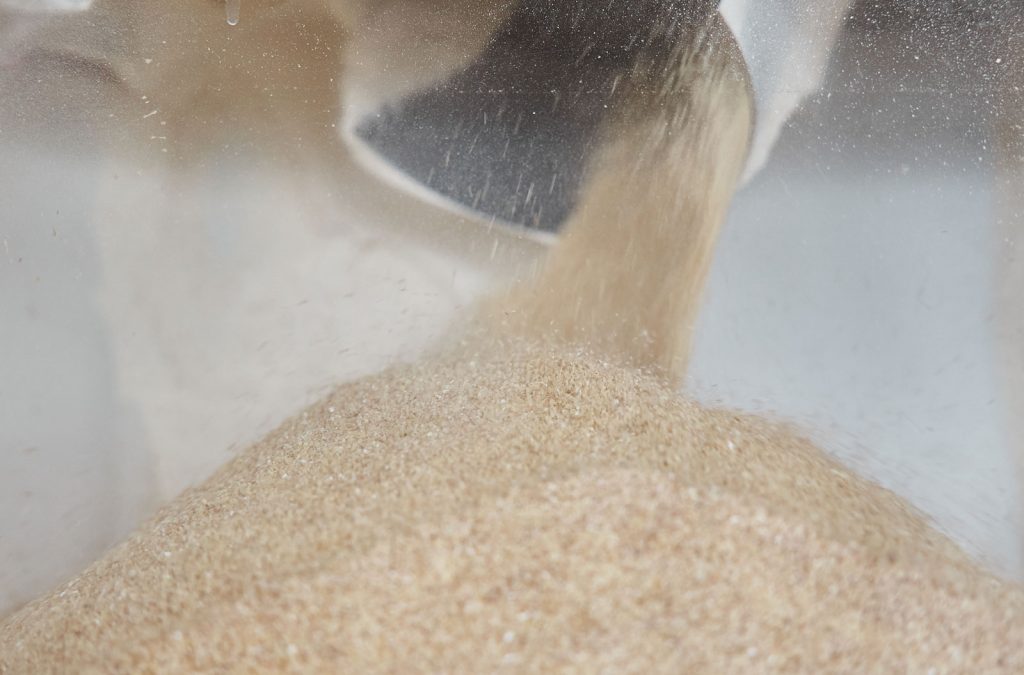
Approximately 47 million tons of rye and soft wheat are processed each year, with more than 3,800 companies employing 45,000 people. The EU flour milling industry is the largest single food user of EU domestic wheat, rye and oats, resulting in 600 different types of flours to meet the high standards and specific demands of the consumer.
Safety and quality are of consummate importance and European standards are extremely high. Ensuring that this level of excellence remains high is a constant challenge that the milling industry takes extremely seriously.
The grinding process operates 24 hours a day, seven days a week; the high-quality grain needs to be in continuous supply.
In the EU, 29% of the flours produced are destined for industrial bakeries, 28% for artisan bakeries, 13% for cakes, biscuits and rusks, 12% for supermarket bakeries, 12% for household use and 6% for other uses and export.
The whole flour-milling sector is coordinated throughout the EU, to comply with the high regulatory requirements and standards which provide consumers with product quality assurance.
Italy is at the top of the European milling sector, with 233 mills producing over 4 million tons of flours each year. The flours used in Italy are produced almost exclusively in Italy.
Not only highly prized as a part of the Mediterranean diet, they form the basis for traditional Italian cakes and pastries. Made with other flours, they are simply not the same! In Italy, 61% of flours are destined for bread making and bread substitutes (like crisp taralli or grissini/breadsticks), 18% for the cake and biscuit industry, 9% for the production of pizza, 5% for household use and 7 % for other uses and exports.
There is an increasing demand by health-conscious consumers in Italy for products using organic or whole wheat flours as well as innovative products, and, to a lesser extent, for products using regional or local wheat as a raw material. Additionally, over the last 10 years, there has been a significant increase in exports of Italian soft wheat flour, with a 350% increase in volume in the decade after 2010 to reach around 220,000 tons. The top export destinations are Europe – 70% – North America (14%), Asia (7%) and Oceania (4%).
The durum wheat sector is a distinctive element of Made in Italy, Italy being the largest producer and exporter of semolina pasta worldwide. Pasta represents the second item of Italy’s agri-food exports, which since 2000 has shown a significantly increasing trend, both in volume and value (in 2017 it doubled the value of 2000 reaching 1.6 billion euros).

Two types of flours are made from durum wheat grain: a coarsely textured flour, called semolina flour, and its by-product, the more finely ground powder, durum wheat flour. Durum flour may also be milled especially on its own instead of as a result of grinding semolina.
Both semolina flour and durum wheat flour are high in protein and gluten, the latter providing plasticity (the ability to hold a shape). It is not particularly elastic, though, so it is ideal for making pasta.
Semolina flour is best for the more hefty pastas which are served “al dente” as it allows the pasta to keep its shape without over-cooking. Commercially, pasta is made using extruding machines, each fitted with a disc to produce over 350 shapes of pasta, including rigatoni, farfalle, and penne.
The natural color of the durum endosperm gives the pasta its golden hue, the taste of the wheat giving a nutty, rich taste.
Durum wheat flour is used for softer noodles as the dough is easier to work with and may be hand rolled instead of extruded.
Durum wheat flour can be used in baking certain types of breads, which tend to be yellow in color with a distinct flavor. In Italy, North Africa and the Middle East, it has historically been used for making artisan, hearth-style and flat breads, recipes handed down from one generation to the next. Since durum wheat doesn’t have the elasticity of other wheat dough, it is not considered suitable for high-volume commercial baking; many recipes combine either semolina flour or durum wheat flour with a variety of other types of flours to get the desired texture.
Durum wheat flour, or semolina flour, more grainy and of a deep yellow, is more difficult to work but has a better resistance to cooking and retains flavor and aromas, which is why it is used for the production of homemade pasta, especially for those formats served “al dente”. Semolina flour is the flour that grandmothers love most! It is rich in proteins of vegetable origin which give it greater satiating value, in fact, it is also used very often in diets. Additionally, it has superior economic value as durum wheat grows only in hot, dry climates. Semolina flour is distinguished in: